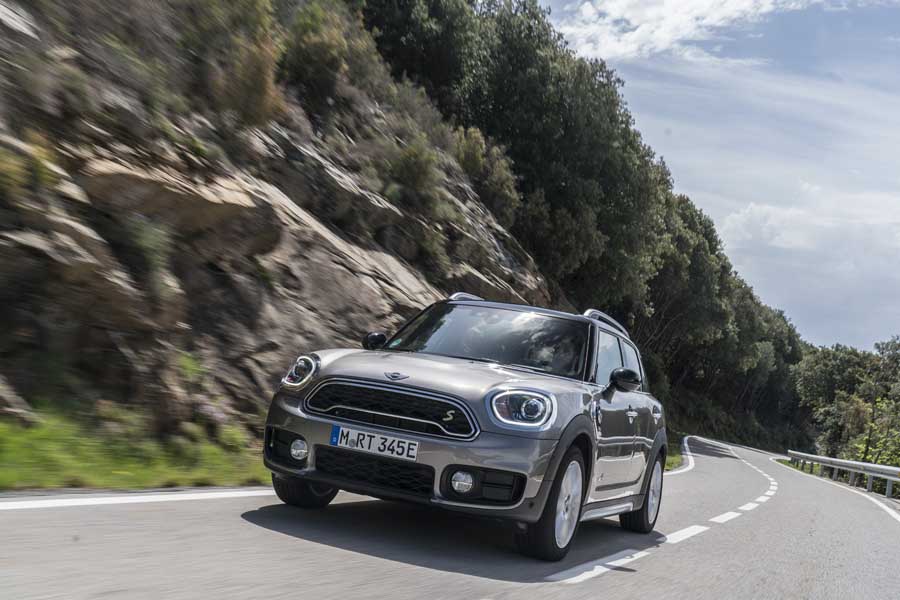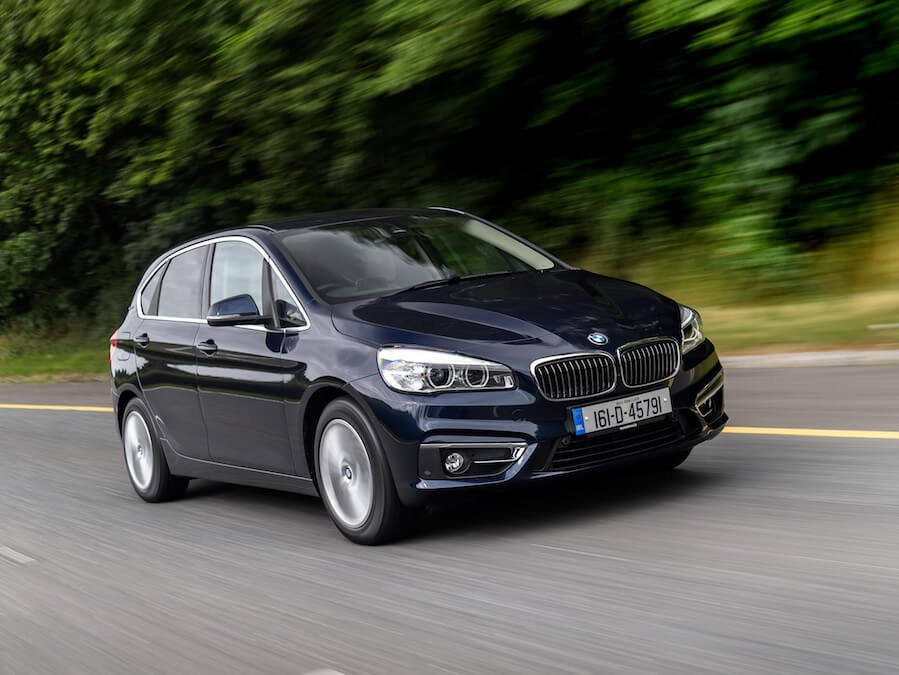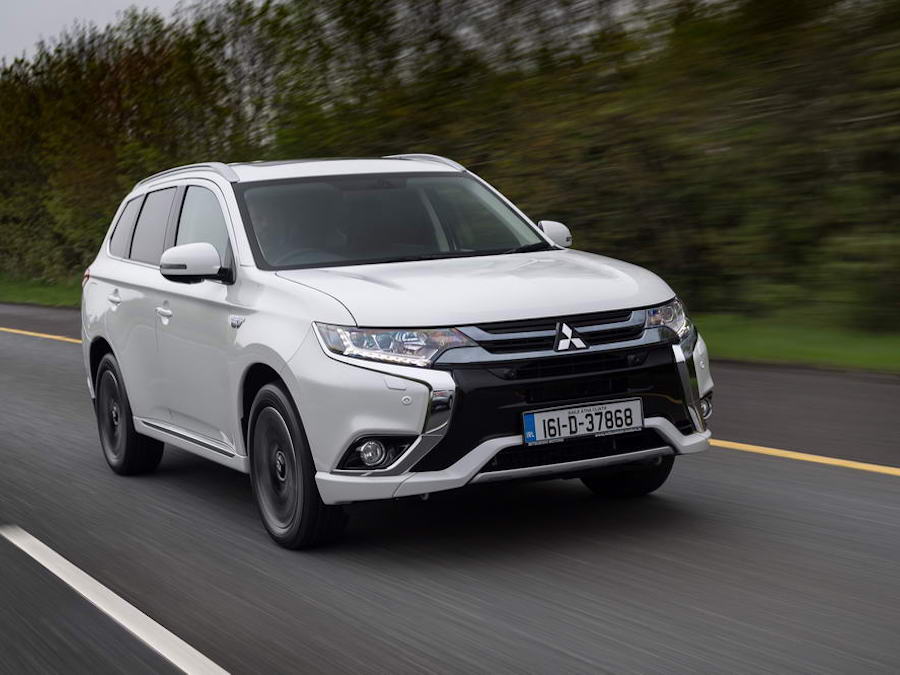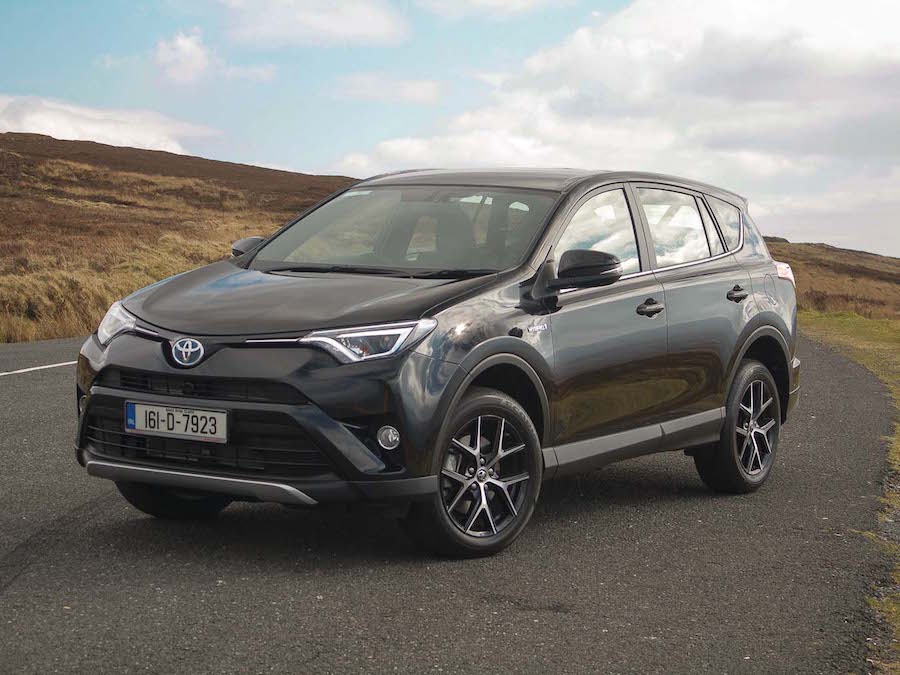MINI has added a plug-in hybrid electric drivetrain to the Countryman crossover, resulting in a 42-kilometre EV driving range. Crucially, despite the additional hardware, it has lost none of the driving fun expected from the MINI brand.
In the metal
Only subtle visual differences mark this plug-in hybrid Countryman out from the rest of the now much-expanded MINI range. The overall styling apes that of the regular Cooper Countryman. Larger air vents in the lower corners of the front bumper include fog lights, while the intakes themselves are covered in a chunky black plastic mesh. Where this plug-in hybrid version differs is the yellow detailing for the 'S' badge on the front grille and yellow and chrome 'E' panels on the side scuttle.
The left side, as with all other plug-in hybrids from the BMW Group such as the 330e and new 530e, is where you'll find the charging port. It is higher up on the MINI compared to other BMWs, and functions in the same way, though the detailing of the black and yellow plastic cover does look a bit tacky to my eyes considering how slick and polished MINI's styling details tend to be.
Sitting in the Countryman's driver's seat reveals only minor changes up front, all to do with the control and functionality of the plug-in hybrid system. The standard car will come equipped with the 6.5-inch display screen, with the option of upgrading to an 8.8-inch touchscreen system, which also includes a built-in 20GB hard drive. Either way, the display options are numerous and include a screen to show which part of the drivetrain is propelling the car and when the battery is charging from the regenerative brakes.
Lower down on the centre console are the usual MINI toggle switches, including a central Start button, this time also in yellow rather than the usual red. To the left of this is the eDrive toggle switch to cycle through the three driving modes: Auto eDrive, Max eDrive and Save Battery. It is also possible to choose from Green, Mid, and Sport settings through the circular dial around the base of the gear selector, as per most other MINIs.
The housing of the battery beneath the rear passenger seats goes almost unnoticed. Rear passenger headroom has decreased by 26mm due to the raised seat base, but as the Countryman already had generous headroom, this slight reduction will affect only the tallest of passengers. Boot space is also down from the usual 450 litres to 405 litres, but it retains practical features such as the separate storage section under the boot floor cover.
Driving it
MINI claims that the Countryman has an electric driving range of 42 kilometres, but you'll need to stick to slower urban driving if you want to see most of that. Providing you keep the 7.6kWh lithium-ion battery fully charged, which takes around 2.5 hours thanks to its 3.6kW charging rate, some drivers will be able to complete the daily commute without ever using the petrol engine.
The car's default drive setting is Auto eDrive and this sees the on-board systems decide what best suits the current driving scenario. It works automatically when the battery has a charge of between 7- and 100 per cent. In most cases, the Countryman will pull away using the electric motor, and if there's enough charge in the battery, it can travel at up to 80km/h on electric power alone in this mode, at which point the three-cylinder combustion engine activates. The interplay between the two motors is near-seamless. In fact, driving around a busy city you are unlikely to notice the changeover happening.
The Max eDrive function is, as you might expect, the car's pure EV mode. With the electric motor's 88hp and, more importantly, its 165Nm of torque available instantly, the Countryman feels reasonably quick from the off. With only a faint whirr from the rear-mounted electric motor, the MINI feels refined and robust, with not a squeak or rattle evident as it goes over bumps. It is also possible to drive at speeds up to 125km/h in EV mode, though doing so will drain the battery quickly. Should you accelerate harder and keep the throttle pinned, the kick down function will spark the petrol engine into life.
Considering the additional 130kg of weight that the plug-in hybrid system adds, there is still plenty of fun to be had from the Countryman on more challenging roads. At 1,660kg it is still a lot of weight to be throwing about, but with a 46:54 front-to-rear weight bias, it's quite good fun. The steering has a familiar MINI feel to it, with enough weight to make it feel connected in the bends, though it won't give you scalpel-like precision.
With Sport mode engaged the MINI uses both motors, and you do notice that extra shove of electrical power from the rear when driving out of corners. With most of the battery mass located low beneath the rear seats, body lean isn't particularly evident. It doesn't feel quite as pinned as the high-performance John Cooper Works Countryman, but then it's not supposed it. This MINI may be a hybrid, but it feels agile enough to keep all but the keenest of drivers satisfied.
If you like your driving data, the on-board computer's seemingly endless list of information from fuel consumption to battery usage will keep you entertained. It can also show graphics displaying how much charge is remaining in the battery. There's also a Save Battery mode that will prevent the charge from depleting by running almost exclusively on the combustion engine, but this will see your fuel consumption take a hit.
What you get for your money
The standard specification includes MINI's 6.5-inch Visual Boost system that features satellite navigation and is controlled via the MINI Controller in the centre console. Having used the optional 8.8-inch screen with its added touchscreen capabilities, we feel this is one box worth ticking. All cars come with 17-inch alloy wheels with the option of an upgrade to 18- or 19-inch wheels. A total of four interior packages are offered, with numerous upholstery choices available.
Summary
While the number of plug-in hybrids grows, few can rival the MINI's sense of driving enjoyment. Even with its added bulk, the Countryman remains a fun car to drive, without sacrificing any of the real-world benefits of electric driving. Its electric-only range may be relatively short, but so too are its charge times, and you still have the safety net of a punchy petrol engine for longer journeys. If you are in the position of enjoying short commuting distances and are committed to charging the car religiously, then this is one of the best examples of its type currently on the market.

































